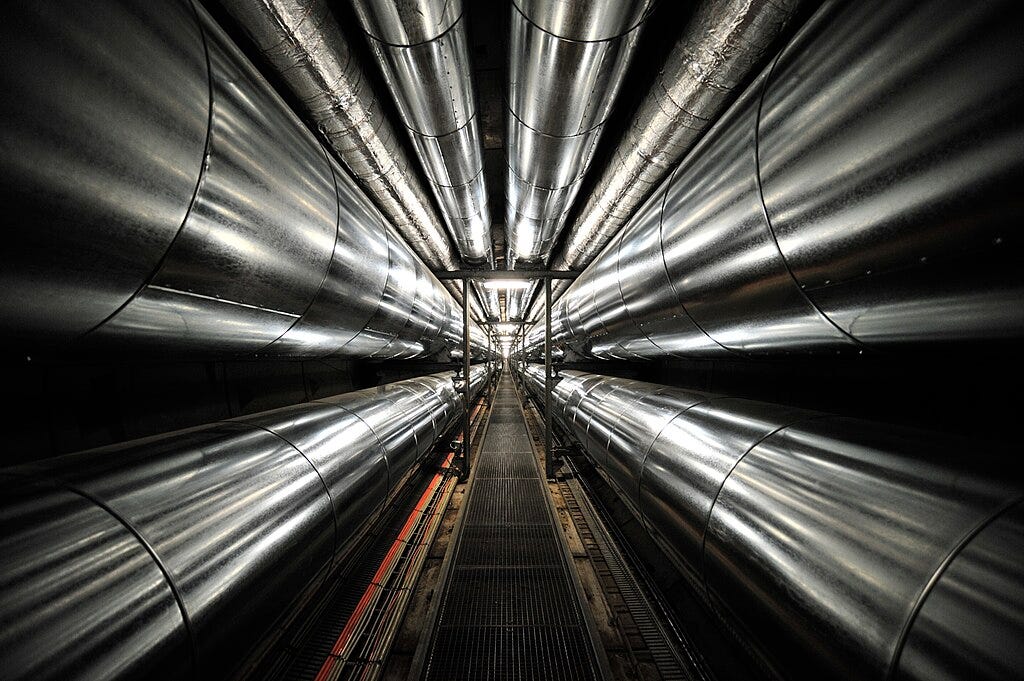Britain’s baffling heat networks: A hot mess of missing information
A web of confusion surrounds Britain’s heat networks, with missing data, murky oversight, and mystery figures threatening to leave the nation’s green heating revolution out in the cold
They’re meant to be the future of clean and green heat—piping heat directly into homes and helping Britain slash its carbon emissions. But how much do we really know about the nation’s so-called “heat networks”? The answer, it turns out, is: not nearly enough.
Heat networks, also known as district heating systems, supply warmth to multiple homes or buildings from a central source, rather than each property relying on its own boiler. In theory, it’s a clever, eco-friendly way to heat our homes. In practice, though, the system seems to be disappearing into a black hole of confusion, missing data and poor oversight.
Recently, new construction began on a major new heat network project in Hull which will serve the city’s residents well in the coming decades. But when it comes to finding out how many older heat network schemes already exist, or how many people are connected, things get murky fast.
The mysterious state of play
According to the Government’s own Climate Change Committee, heat networks currently provide around 2% of the UK’s total heat supply. By 2050, they’re supposed to deliver 18%. Great ambition, but there’s a big problem: no one seems to know exactly how many there are, or who’s on them.
The most recent official data, published in 2023, says there are roughly 12,000 heat networks, down from 14,000 recorded in 2015. Around 78% are communal systems, serving some 505,000 consumers, the vast majority of them domestic users. But more than 1,500 networks were excluded from the data altogether because of “poor data quality”.
Government analysts admit there are serious flaws. The figures only cover registered networks, not the entire market. The datasets aren’t comparable between years. And there are “differences in methodology” so glaring that it’s impossible to identify real trends. Worse still, there are no government statistics planned at all for 2023–26, even as Ofgem prepares to take over regulation in 2025.
The result? No one has a clear picture of Britain’s legacy heat network landscape, and that’s creating chaos for policymakers, providers and consumers alike.
Independent groups have raised alarm bells. The Heat Trust, which monitors standards for customers on heat networks, has warned that the apparent “shrinkage” in the market doesn’t reflect reality, and likely points to widespread non-compliance by operators. Meanwhile, a Social Market Foundation study estimated that around 900,000 households (that’s one in 25 UK homes) are already connected to a heat network.
So who’s right? It’s anyone’s guess.
Legacy power sources
To make matters worse, many existing heat networks are still powered by gas or combined heat and power (CHP) systems; hardly the clean, low-cost solution we’ve been promised. With soaring global gas prices and patchy oversight, many customers aren’t seeing the benefits they were told to expect.
We need urgent action to get these legacy heat networks mapped and managed to protect consumers and deliver change. The quicker we find them, the quicker we can look to replace their expensive gas fired heating, and utilise clean low cost heat.
This is where sovereign heat and waste heat sources such as geothermal heat, river water, data centres and waste water treatment can be turned into valuable resources to reduce fuel poverty. Experts say Ofgem has been handed a “hot potato”—tasked with fixing an industry riddled with missing data, outdated technology and regulatory gaps. Without urgent action, Britain’s push toward greener, cheaper heat risks going cold before it ever really warms up.
In an era of smart meters and instant data, the lack of basic information on such a critical part of our energy system is nothing short of astonishing. If heat networks are going to play their part in the UK’s net-zero future, it’s time to shine some light—and a lot more accountability—into this murky system.




